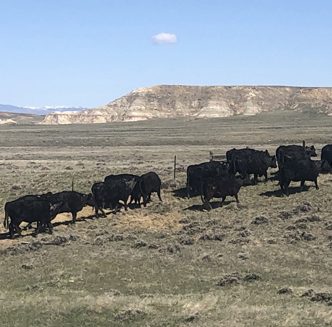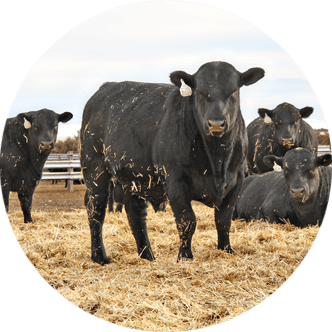Farm country production impacted by recent artic blast
Shipment suspensions, adverse weather conditions and concerns about winter kill across the plains are shaping the agricultural commodity trade.
AccuWeather labeled a late January arctic blast a “once-in-a-generation” storm, bringing frigid temperatures, heavy snow and dangerous ice to the eastern half of the U.S.
This arctic airmass moved across the U.S. and ultimately impacted up to 41 states and over 230 million people.
The Northern Plains experienced temperatures dropping to minus 30 degrees Fahrenheit, while parts of Texas and Louisiana received over six inches of snow and northern Florida reported significant snowfall.
For much of January, cold air mixed with a large swath of moisture from the Gulf of Mexico, created ideal conditions for snow to fall over parts of the deep South.
Reports indicate portions of Texas, southern Louisiana, Mississippi and Alabama received snowfall, while Milton, Fla. received nearly 10 inches of snow during the storm, breaking the previous record of four inches set in 1954.
Due to this rare winter storm, various regions are expected to see short-term delays and disruptions in produce production.
Experts estimate billions of dollars in crop damage may occur, with particular concern for Florida’s citrus and strawberry crops, Louisiana’s sugarcane and the Midwest’s winter wheat.
Shipping delays
Logistics challenges, such as shipping delays, have been a persistent issue during the recent storms.
The Port of Houston closed its public facilities, while Port Freeport experienced limited vessel activity, and both regions dealt with heavy snow, ice and high wind gusts.
In a recent Fresh Plaza article, Texas International Produce Association Chief Executive Officer and President Dante Galeazzi highlights a lot of Texas is not used to these temperatures or conditions, and several heavy equipment operators simply couldn’t work because of concerns about ice on the roads.
The article further notes, “The storm affected the harvest of products like corn, as machinery was unable to access the fields due to muddy conditions.”
Gaps in production
In south Texas, the production of commodities, such as leafy greens including spinach, collard greens, mustards, cilantro and parsley, is expected to face a gap.
According to a post on the Texas International Produce Association’s Facebook page, local farmers in the Rio Grande Valley have been combating frigid temperatures by spraying their crops with vitamins and using helicopters to circulate warm air over the fields to protect the plants.
“If there is any damage to the product, it’s going to take a few days before we can assess things like leaf burn,” Galeazzi adds. “We’re closely monitoring items with high water content, such as celery. However, many factors determine the availability of this product, the extent of any damage and, ultimately, what the supply gap may look like.”
In Poteet, Texas, recent freezes have adversely affected strawberry crops, leading to delays in production.
Similarly, cold temperatures in Florida have impacted strawberry harvesting, which is essential as the market gears up for Valentine’s Day.
Additionally, the harvest of peppers is experiencing delays as well, with prices recently dropping from the high $30 range to $15 per box.
Cold weather can also lead to bloom drops in plants like peppers, squash and cucumbers during their early production stages, further contributing to gaps in availability.
Experts report sugarcane crops in Louisiana and Florida could see setbacks, as negative temperatures can burn the leaves of young plants, killing them or delaying their development.
However, this year’s harvest concluded earlier in January, so the sugarcane was starting to sprout again.
Winter wheat damage
Frigid temperatures likely killed as much as 15 percent of the winter wheat crop in parts of the Plains and Midwest, according to Commodity Weather Group (CWG).
The recent arctic storm affected approximately 65 percent of the nation’s hard red winter wheat belt, which stretches from Montana to northern Texas, including parts of Kansas.
The severe cold weather caused by the polar vortex impacted about 35 percent of the soft red winter wheat belt, specifically in Illinois, Indiana, southern Michigan and Ohio.
Hard red winter wheat is primarily grown in the Plains and is used to make bread, while soft red winter wheat is produced in the Midwest for cookies and snack foods.
In a Jan. 27 article by Reuters, CWG Agriculture Meteorologist Joe Woznicki speculates, “If all of the wheat were well established, producers would expect losses of about 10 percent in areas experiencing winterkill. However, losses might be closer to 15 percent in regions where wheat crops were poorly established or where dry soils left the plants more vulnerable to the cold. The ultimate amount of crop loss is still uncertain.”
Assessing freeze injury to winter wheat is notoriously difficult until the dormant crops resume growth in the spring.
Woznicki stated, “Without a protective layer of snow, winter wheat was vulnerable to freeze damage or ‘winterkill’ as temperatures fell to or below minus five degrees Fahrenheit.”
The article concludes, using last year’s production figures for wheat harvested in 2024 as an estimate, a 10 percent loss on 65 percent of the hard red winter acreage works out to 52 million bushels or 6.7 percent of the crop.
A 10 percent loss on 35 percent of the soft red wheat acreage would be 12 million bushels or 3.5 percent of production, reports CWG.
The U.S. is the world’s fifth largest wheat exporter and U.S. farmers planted 34.1 million acres of winter wheat for harvest in 2025, which is up two percent from the prior year.
Melissa Anderson is the editor of the Wyoming Livestock Roundup. Send comments on this article to roundup@wylr.net.





